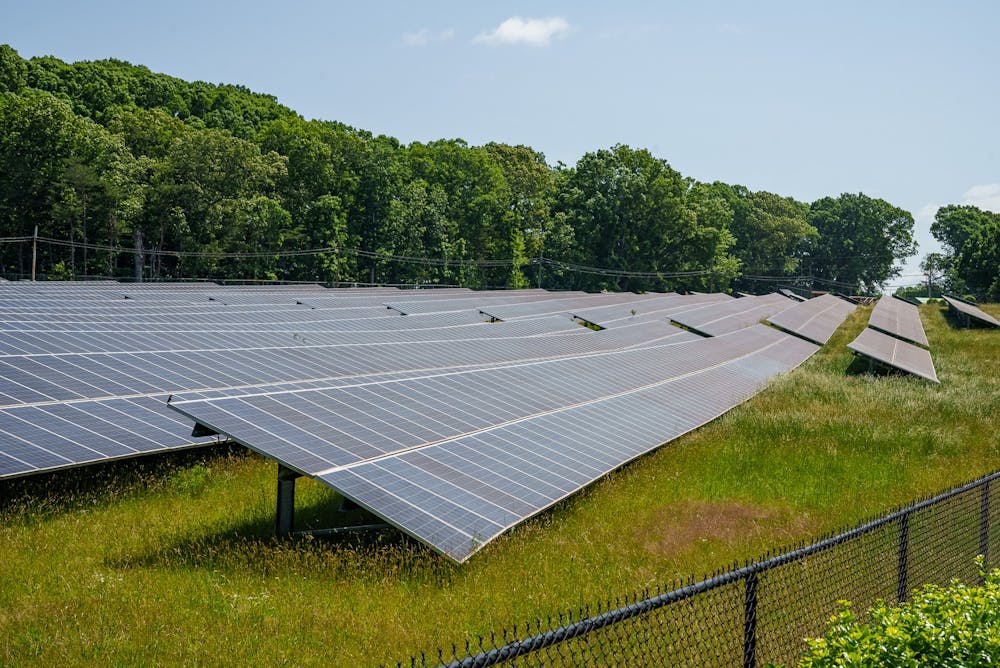Elon University is collaborating with eight other colleges and universities to fund the construction of a large solar facility in Kentucky. The project, called the Sebree Solar II Project, is in association with NextEra Energy Resources — the world’s largest generator of wind and solar energy. Construction for the solar farm will begin in 2025 and the facility is set to open for commercial use in late 2026.
Participation in this Power Purchase Agreement is just one part of Elon’s Sustainability Master Plan. The plan, updated this year, states that the university aims to be carbon neutral by 2037, among other goals. Carbon neutrality is when the same amount of carbon emitted by a given company or institution is removed from the atmosphere, leaving a net zero impact. Carbon emissions and energy use do not have to decrease for a company or institution to obtain carbon neutrality.
Elon receives electricity through a shared utility grid, so energy generated by the Sebree Solar II Project cannot be directly transmitted to the university. Participation in the Sebree Solar Project II will not reduce the university’s carbon emissions, but it will allow the university to track and take ownership of the renewable electricity generation it funds.
The solar facility, located in Henderson County, Kentucky, will be “capable of generating up to 250 megawatts of clean, renewable energy,” according to NextEra's website. This would be enough energy to power 24,000 homes annually. NextEra also claims that the project will generate approximately $18 million in tax revenue for Henderson County.
In exchange for purchasing renewable energy generated by the Sebree Solar II Project, Elon will receive Renewable Energy Credits. RECs are certificates that attribute the use of renewable energy to companies and institutions that fund the production of renewable energy.
Elaine Durr, senior director of sustainability, has been deeply involved in the Power Purchase Agreement. She wrote in a statement to Elon News Network that the purchasing of RECs through NextEra energy will aid Elon in reaching its goal of carbon neutrality.
“These types of long-term, off-site agreements are typically only accessible to buyers with much higher electricity usage than Elon or any of the partner institutions alone,” Durr wrote. “By joining together, the schools were able to commit to buying enough energy from the project to make the agreement possible.”
The colleges participating in the Power Purchase Agreement are Davidson College, Dickinson College, Elon University, Haverford College, Lafayette College, Lehigh University, Muhlenberg College, Swarthmore College and Wake Forest University. The PPA denotes that each institution will purchase energy from NextEra Energy for 20 years.
Elon also funds the solar facility at the nearby Loy Farm. Built in 2015, the facility generates 4,500 megawatt hours of electricity annually, according to the university’s website. Kelly Harer, associate director of sustainability for education and outreach, said in a previous interview with Elon News Network that similar to the Solar Sebree Project II, energy generated by the panels at Loy Farm does not directly fuel Elon’s campus nor does it reduce the school’s carbon emissions.
“I give tours of those solar panels, and I always make sure that people know it’s going to the local grid. Probably some electrons are coming over here, but it's not coming on on campus,” Harer said. “We can't track that.”
Another program that will aid Elon is reaching its goal of carbon neutrality is the Carbon Neutral Global Engagement Initiative. In the 2023 fiscal year, 21% of Elon’s greenhouse gas emissions came from study abroad alone. Durr wrote that emissions from study abroad and study USA programs will not be reduced and may even increase. Through this initiative, the university seeks to address this concern by annually purchasing carbon offsets.
While carbon offsets and renewable energy credits are a large part of Elon’s plan for reaching carbon neutrality, Durr emphasized that reducing energy consumption is the university’s primary focus.
“The largest source of Elon University’s carbon emissions is energy consumption,” Durr wrote. “Given this, the university has and will continue to focus on ways to reduce energy consumption.”


